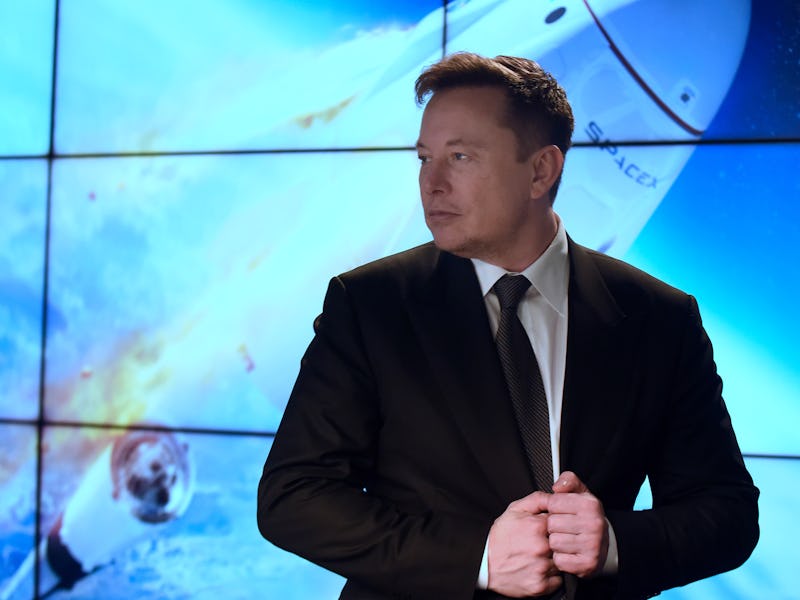SpaceX Crew Dragon is about to send up its first humans: what to know
SpaceX is about to send humans into space for the first time with the Crew Dragon.

SpaceX is about to complete a major milestone. On May 27, the company is scheduled to send two astronauts into space. It's the first time Elon Musk's space-faring firm has ever launched a human, and paves the way for its more ambitious missions like sending humans to Mars. It also marks the first time in nearly a decade that American astronauts have gone into space from American soil.
"It's going to uplift America," NASA administrator Jim Bridenstine told CNBC earlier this month.
On Monday, NASA announced that it will host a pre-launch briefing on May 1. The "Demo-2" mission at the center of the milestone is critical for the agency, as it forms part of the Commercial Crew program. Alongside Boeing, SpaceX is developing a human-carrying capsule to ferry NASA astronauts to and from the International Space Station.
A successful program will end NASA's dependence on Russian agency Roscosmos. Ever since NASA's space shuttle program ended in 2011, the agency has rented seats on Roscosmos' Soyuz rockets at around $80 million each. These are used to launch the agency's astronauts from the Baikonur Cosmodrome in Kazakhstan.
SpaceX's Crew Dragon, the capsule at the center of May's mission, could bring these missions closer to home. The capsule completed an unmanned "Demo-1" flight in March 2019. Since then it's been working on perfecting the capsule ready for the first human flight.
Progress has been difficult – SpaceX's Mars-bound Starship unveiling in September 2019 led to pointed comments from NASA administrator Jim Bridenstine – but SpaceX has gradually reached a stage where it's able to make the final preparations. A major hurdle was cleared in January, when the team completed an in-flight abort test by demonstrating the capsule could disengage and escape from a booster mid-launch. The Crew Dragon achieved speeds of up to Mach 2.2 and an altitude of 131,000 feet. This safety check showed the capsule could act fast in the event of an emergency.
Here's how the next month is looking for SpaceX's big mission.
May 1: pre-launch briefing
NASA will host three briefings at the Johnson Space Center in Houston. These are aimed at explaining the mission in detail. Of course, all media access will be remote.
- The first briefing is at 11 a.m. Eastern time, and will provide an overview of the International Space Station and Commercial Crew program. This will include NASA administrator Jim Bridenstine, Commercial Crew program manager Kathy Lueders, International Space Station program manager Kirk Shireman, and SpaceX president Gwynne Shotwell.
- The second briefing is at 12:30 p.m., and will focus on the mission. This will include Commercial Crew program deputy manager Steve Stich, Demo-2 flight director Zeb Scoville, and director of crew mission management Benji Reed.
- The third briefing is at 2 p.m., and focuses on the crew. This will include astronaut Robert Behnken, who will serve as joint operations commander, and Douglas Hurley, who will also serve as spacecraft commander.
Following the third briefing, Behnken and Hurley will complete a series of remote interviews at 3:30 p.m. Eastern time.
Sometime before May 27: static test fire
SpaceX will likely complete a static test fire of the Falcon 9 booster it plans to use for the mission. This will feature the reintroduced NASA "worm" logo. This routine check fires the engines for a few seconds without moving. The goal is to identify any anomalies.
The Crew Dragon joining with the ISS.
May 27: lift-off!
The Falcon 9 booster carrying the Crew Dragon is set to lift off at 4:32 p.m. Eastern time on May 27. The rocket will take off from Launch Complex 39A at Florida's Kennedy Space Center, the same complex that sent the Apollo astronauts to the moon. It's set to be a muted affair, as The Atlantic reports that spectators will be asked to stay home due to the Covid-19 outbreak.
May 28: arrival
The pair are set to arrive at the International Space Station. They will join NASA astronaut Chris Cassidy, commander of Expedition 63. They will also be joined by Anatoly Ivanishin and Ivan Vagner, flight engineers with Roscosmos.
Sometime later: return
Behnken and Hurley will return to Earth at a time determined by NASA. Unfortunately, it's not clear at this stage how long the pair will stay at the space station. NASA's announcement claims the length of stay is "to be determined."
The initial plan was to send the pair to the space station for up to two weeks, a relatively short stay. NASA administrator Jim Bridenstine explained in January that the team was still considering sending the pair up for a longer stay. It was reported in October 2019 that NASA may use a longer stay to rotate the crew on board, reducing some of the pressure on its schedule.
When the pair return, they'll come back having played a major role in one of the biggest achievements for NASA and SpaceX.